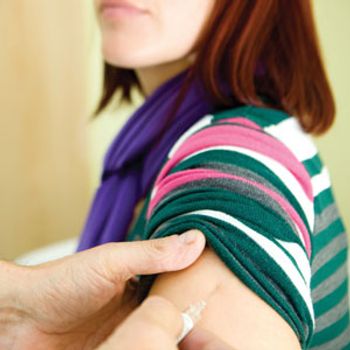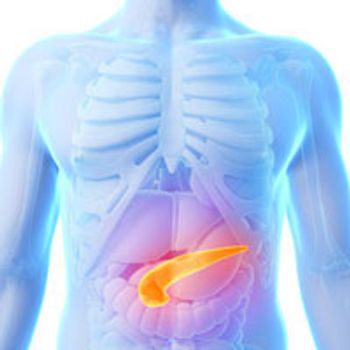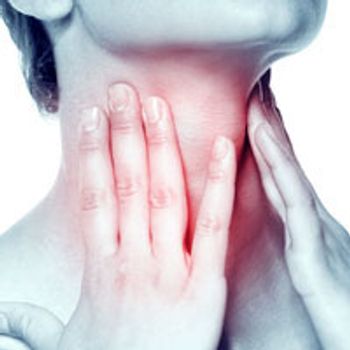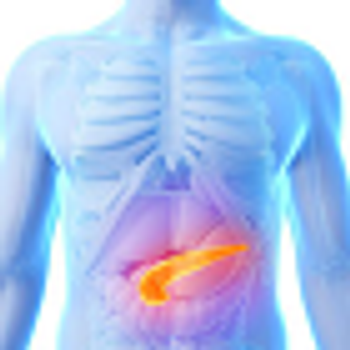
The treatment of TNBC is rapidly evolving, with immotherapies, AR-targeted agents and targeted therapies.

The treatment of TNBC is rapidly evolving, with immotherapies, AR-targeted agents and targeted therapies.

Educate, engage and energize — those are the three main verbs and goals of the Bladder Cancer Advocacy Network’s (BCAN) first ever leadership summit.

A decade after the FDA approved the first vaccine to prevent human papillomavirus (HPV), a new report from the Centers for Disease Control and Prevention (CDC) shows that the incidence of HPV-associated cancers is rising, with the number of HPV-associated cancers diagnosed annually between 2008 and 2012 increasing by approximately 16% compared with the previous 5-year period.

The FDA has approved dronabinol oral solution (Syndros) to treat chemotherapy-induced nausea and vomiting (CINV) in patients who have not responded to conventional antiemetic therapies.

Results of a small study exploring the use of frozen gloves and socks in women receiving paclitaxel chemotherapy for their breast cancer suggest the approach may hold promise for the relief of chemotherapy-induced peripheral neuropathy (CIPN).

Coping with the aftermath of cancer and cancer treatment can be especially difficult for survivors of head and neck cancer, according to Ann Marie Flores, PT, PhD, CLT.

While it is known that overweight and obese survivors of breast cancer experience poorer outcomes, gaps remain with regard to risk perception and communication between survivors and health care providers.

Oncology nurses receive a steady stream of information on the benefits of exercise for health and wellness—not just a way to help prevent cancer and lower risk for the general population, but to improve quality of life and reduce the risk of recurrence for patients and survivors.

In a small pilot study, presented at the recent 2016 ASCO Annual Meeting, researchers are evaluating whether wearable activity monitors can help clinicians to better assess patient well-being between office visits.

Though there are few therapeutic options for patients with myelofibrosis, ruxolitinib (Jakafi) represents an important look towards the future, according to Maureen E. Thyne, a physician assistant in the Outpatient Leukemia Service at Weill Cornell Medical College.

Research suggests that 25% to 40% of individuals receiving chemotherapy experience persistent mild to moderate cognitive changes, and a study of breast cancer survivors suggests that a new type of psychotherapy delivered by videoconference may help reduce these effects, often referred to as “chemobrain.”

Early palliative care integrated with oncology care benefits not only patients with cancer but also family caregivers.

With the growing use of oral therapies in cancer care, it is crucial that oncology nurses are using a systematic approach to assess and improve adherence, according to Whitney Perry, APRN, AOCNP.

Portal vein thrombosis (PVT) is a dangerous and often overlooked side effect of certain gastrointestinal malignancies such as liver and pancreatic cancer, that oncology nurses need to be more proactive in managing.

A multidisciplinary team led by oncology nurses can reduce both hospitalization and treatment breaks for patients with head and neck cancer.

Being married may help extend survival among patients with cancer, and the benefit is largely unaffected by economic resources like health insurance, a finding which suggests that clinicians who treat unmarried patients with cancer should ask if there is someone within their social network available to help them physically and emotionally.


A telephone triage service combined with patient education has helped to reduce cancer-related emergency department visits by 60% over 4 months, where it was piloted at a Florida health system, and it’s an approach researchers say can be easily replicated by other practices.

The theme of World Cancer Day this year is

Results of a recent study show that patients, caregivers, healthcare providers, and members of the general public have stronger negative attitudes toward lung cancer compared with breast cancer.

Previous studies have linked radiation to the pancreas during childhood to an increased risk of type 1 or 2 diabetes, and in a recent small study, researchers investigated the mechanisms leading to abnormal glucose and insulin dynamics in survivors of childhood cancers.

At the inaugural 2016 Cancer Survivorship Symposium in San Francisco, Smita Bhatia delivered a lecture titled

New research has found that low-income breast cancer survivors are more likely to adhere to recommended survivorship care if they receive counseling along with a treatment summary and survivorship care plan (TSSP).

In this interview to gain further insight into the flurry of FDA activity, Tim Turnham, executive director of the Melanoma Research Foundation, sheds light on the recent drug approvals and what's next for treating melanoma.

For oncology practitioners fielding questions from patients and survivors about breast cancer or genetics research news they've read online or through social media, a recently-launched news and information rating resource hopes to make that process easier.

For patients with painful bone metastases, an intervention combining palliative care with radiation oncology led to better results, according to preliminary findings from a new study.

Though immunotherapies can provide significant survival benefit for patients with lung cancer, using the agents in practice is still unchartered territory for many clinicians.

Although it is important for clinicians and their patients who are receiving anticancer treatment to discuss patients' fertility preservation options, a new study has found that whether these conversations take place and, importantly, whether ensuing action is taken, depends on a number of factors.

A new study is raising questions about the benefits of chemotherapy for patients with end-stage cancer, finding that in terms of quality of life, for many patients it does more harm than good.

The addition of docetaxel to standard hormonal therapy significantly improved survival among men with newly diagnosed, hormone-naïve advanced prostate cancer.

Published: May 14th 2015 | Updated:

Published: July 24th 2015 | Updated:

Published: July 28th 2015 | Updated:

Published: August 5th 2015 | Updated:

Published: October 5th 2015 | Updated:

Published: November 6th 2015 | Updated: